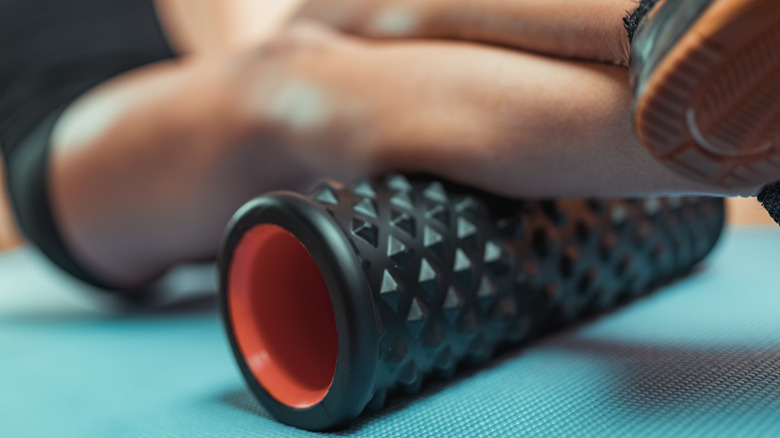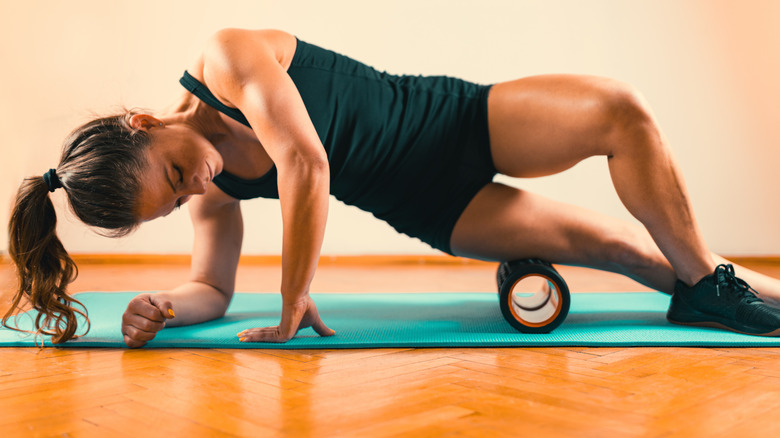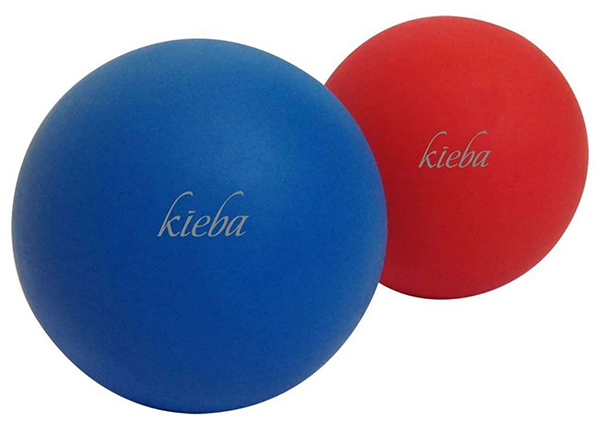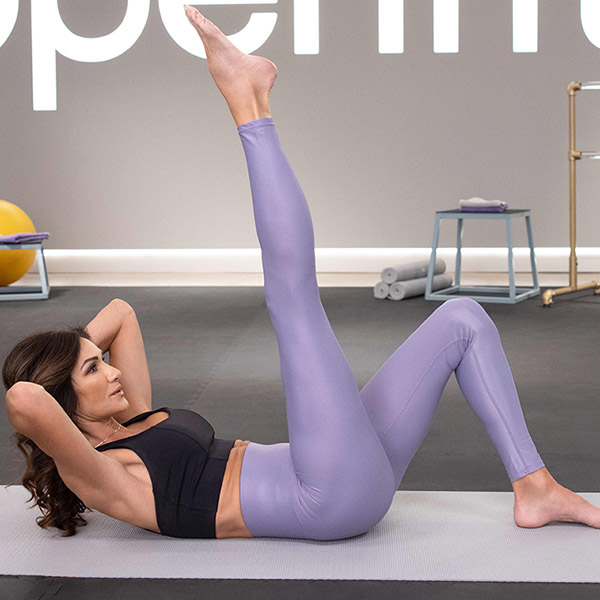According to the National Association of Sports Medicine, foam rolling acts as a self-myofascial release that activates neural receptors to help relax the muscles. Foam rolling, when done correctly, can break up adhesions that contribute to the cumulative injury cycle. By targeting these adhesions, sometimes called trigger points, you can help the soft tissues of the body heal.
Sometimes foam rolling can cause bruises if it’s not done correctly, according to Shape. A bruise will appear when small blood vessels break underneath the skin and leak blood (via Cleveland Clinic). Typically a bruise occurs during an accident or fall, but bruises from foam rolling might work against the healing you’re seeking. Let’s look at some chief reasons why you might bruise from foam rolling.
You’re foam rolling too long
According to Shape, if you feel sore after foam rolling, you’re probably rolling too hard or too long. Typically, you should be moving over a particularly tight spot for only about 30 to 60 seconds. Although the pressure really depends on your tolerance, there should be a sense of release after you roll. Foam rolling might feel painful when you’re at a sore spot, but you should feel relaxed afterward, according to Sports Injury Physio. Rolling too hard can be counterproductive to your efforts because the muscles might respond with more tightness or bruising (via Shape). On a pain scale of 10, keep the pressure to a five (via Self).
It’s also best to start with the points along muscles or tissues that are less sore (via Self). This encourages the soft tissues to relax before you hit that hard spot. Begin with long, easy strokes along the entire muscle for about two minutes, then head to the tender area for 30 seconds, according to Sports Injury Physio. It also helps to do some static or dynamic stretching afterwards as you’ll get more lengthening of the muscle tissues, according to the National Association of Sports Medicine. You can also do some foam rolling during the cooldown of your workout.
You’re foam rolling the wrong places
Another reason you might bruise while foam rolling is that you’re rolling over tendons, bones, or joints that are typically hard, according to Shape. When you work around a joint, you’re targeting places that won’t benefit from foam rolling because they’re less likely to lengthen. Rather than roll over a bone, such as a knee or an ankle, find the muscles around them, such as the quad or calf.
You might be tempted to roll out the tension in your lower back, but this is a mistake, according to Self. Not only will you be rolling on bone, but you’ll more than likely put an excessive arch in your lower back, which might cause more strain. Instead, roll over a lacrosse ball on the muscles alongside your spine. You can still use your foam roller along your upper and mid back, but be sure to concentrate on the muscles such as the lats.
Runners will often want to relieve strain along their iliotibial band through foam rolling, but Sports Injury Physio says this won’t bring relief. Because the IT band is made from collagen fibers rather than muscle fibers, it’s less likely to stretch and relax. Using a foam roller on your IT band might hurt more because you’re pressing on sensitive nerve endings. Oftentimes, a tight IT band stems from tight glutes, tensor fascia lata, or quads. Try foam rolling over those areas to feel relief and relaxation without bruising.










